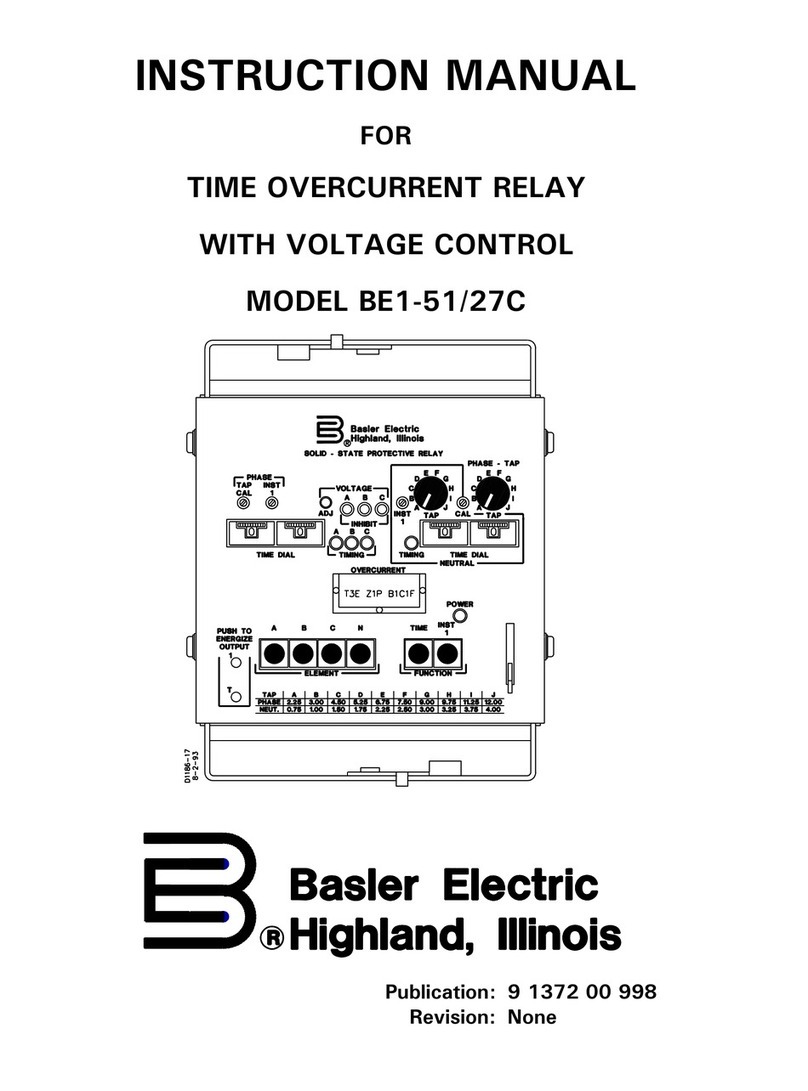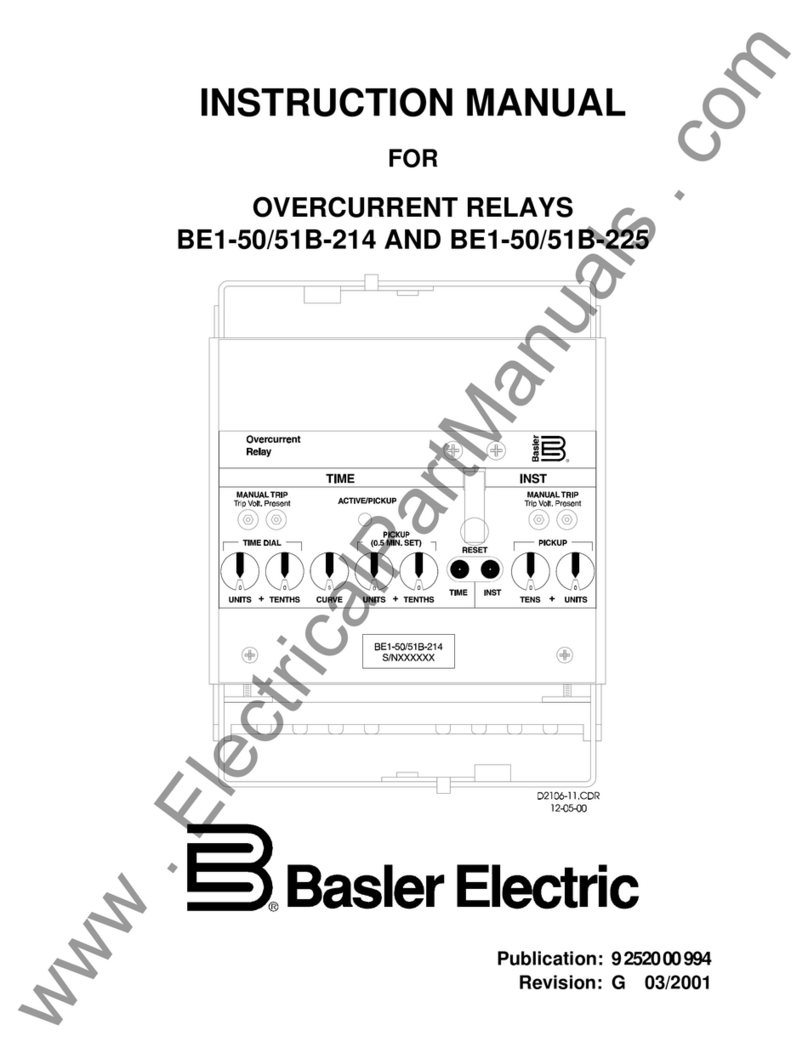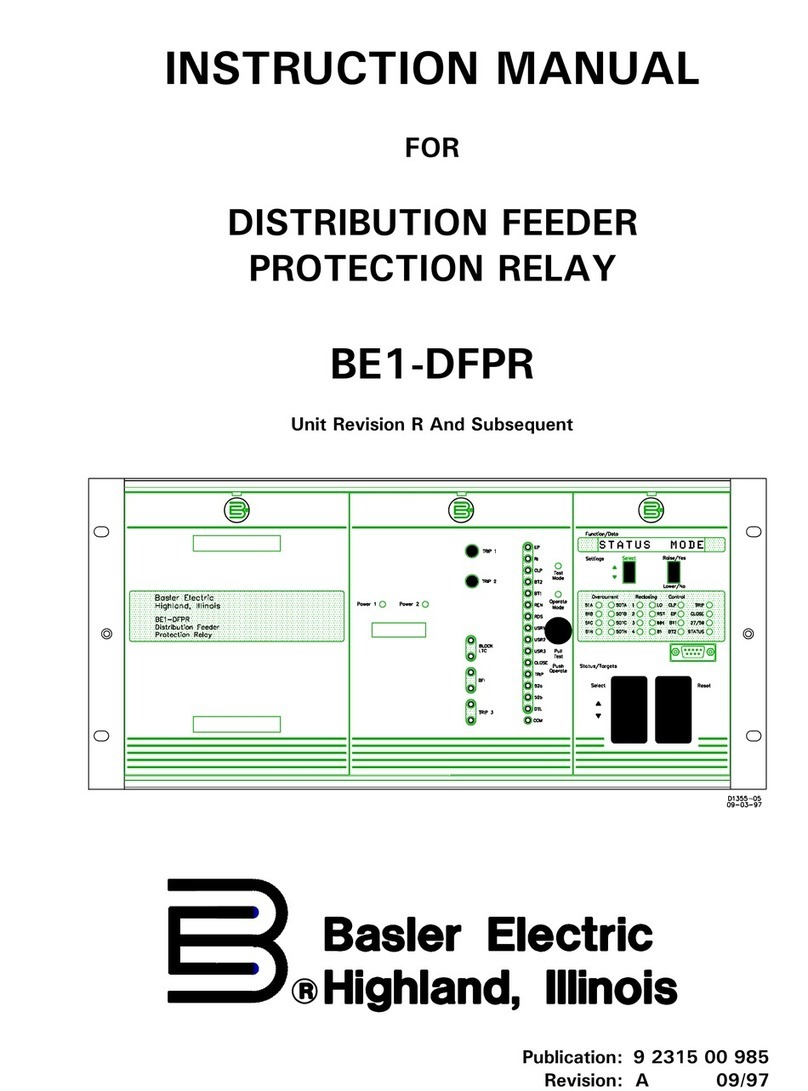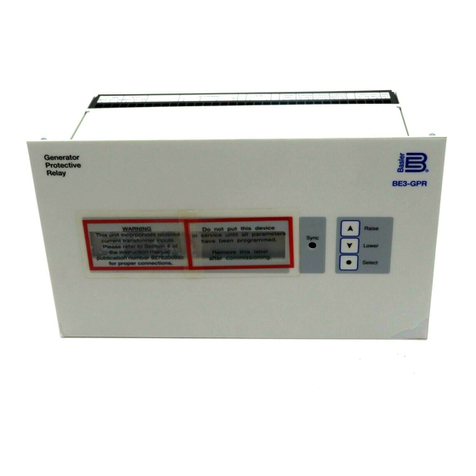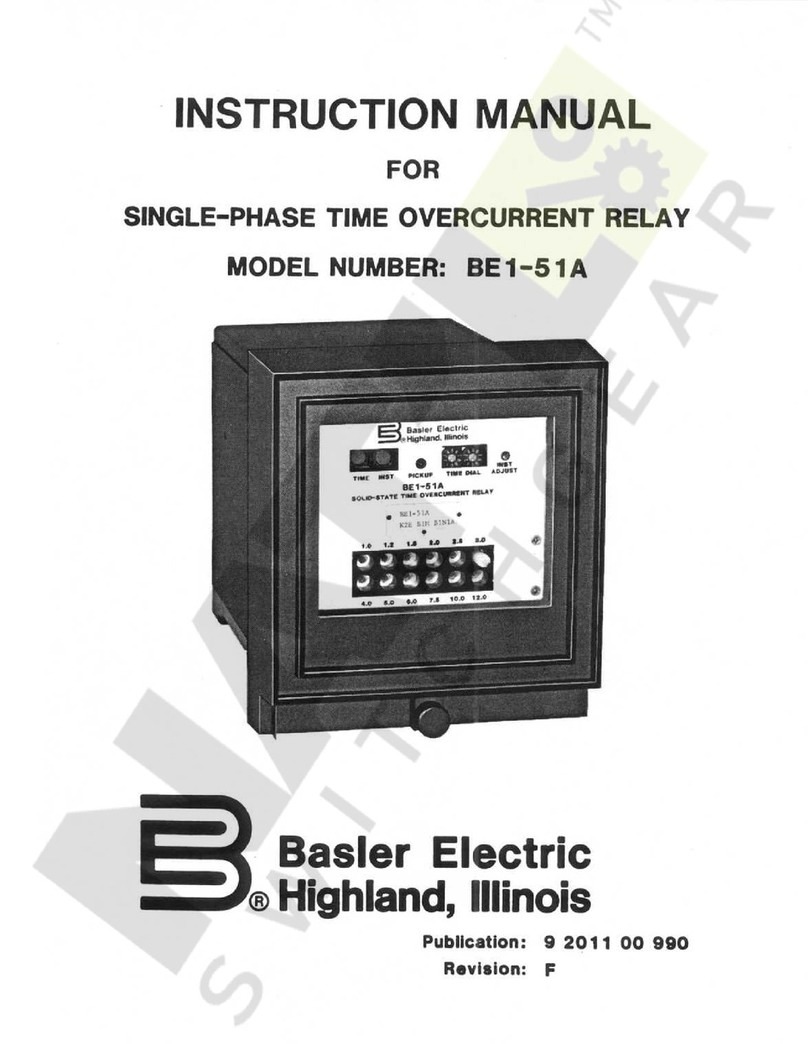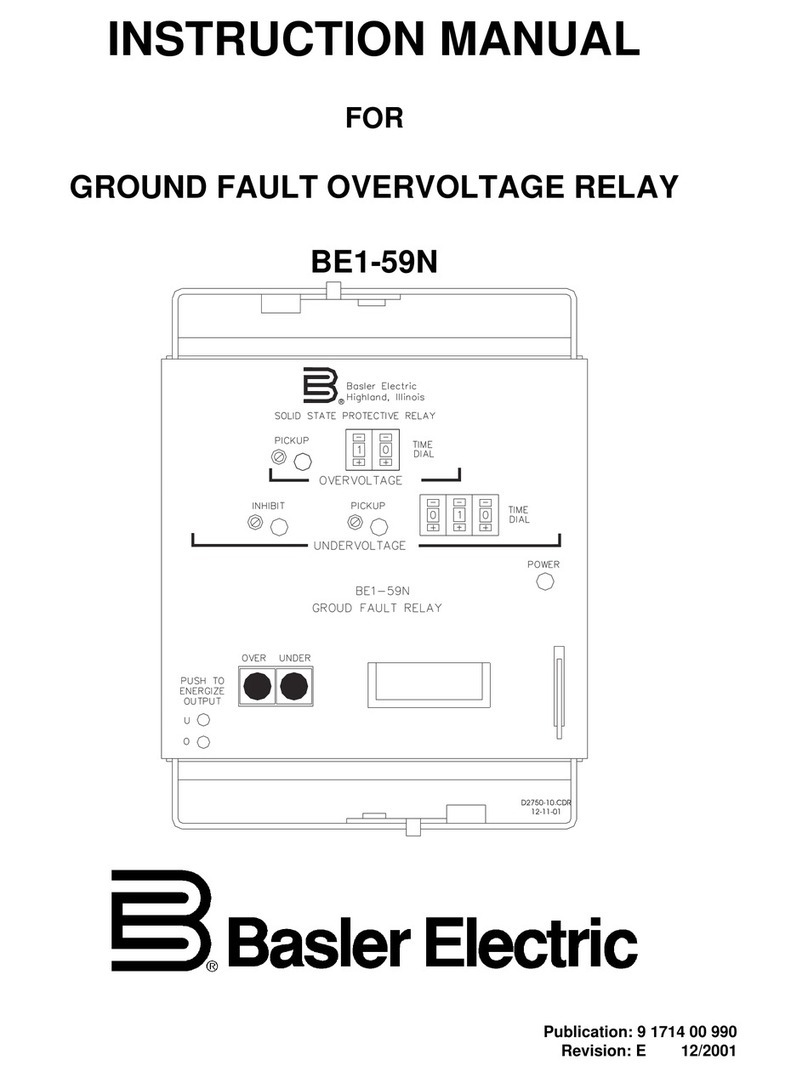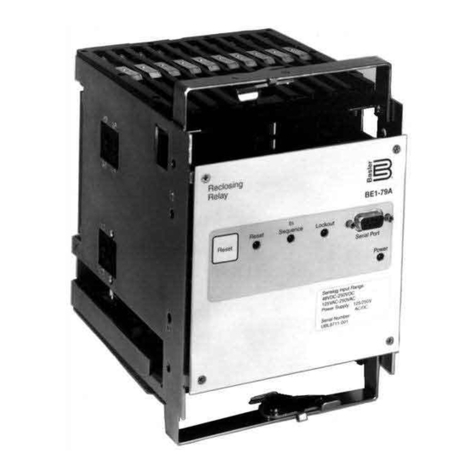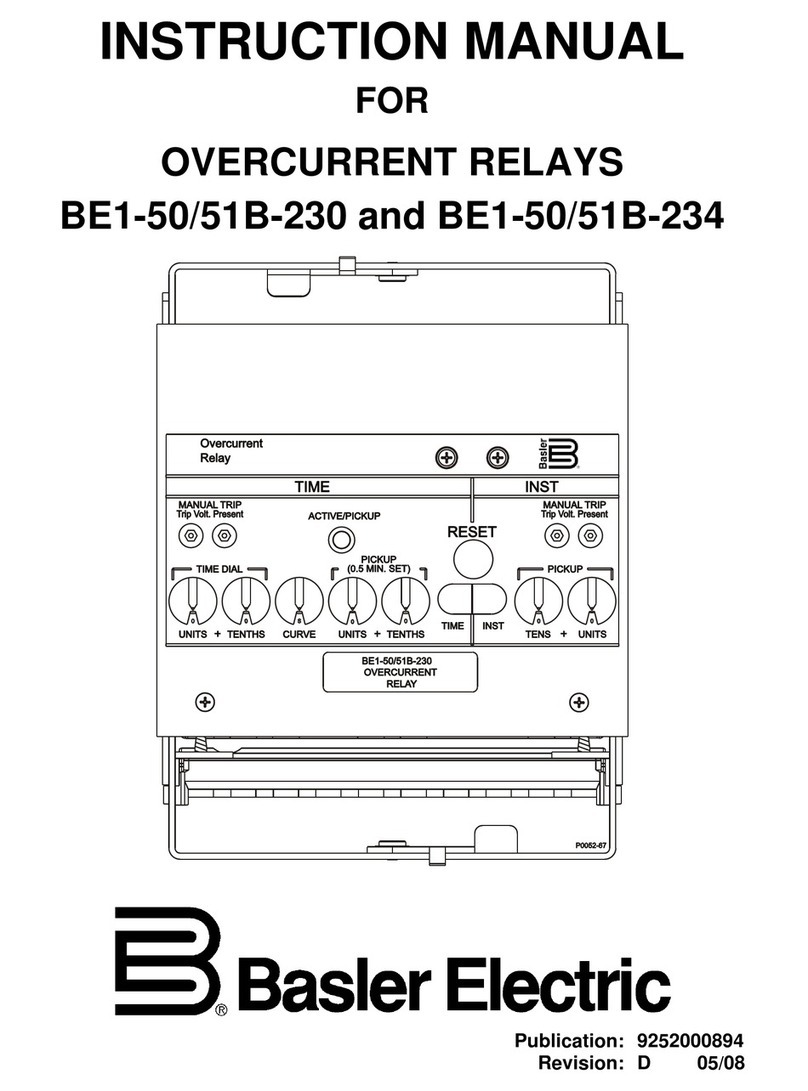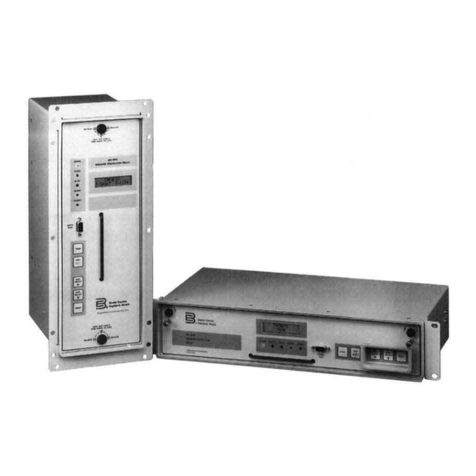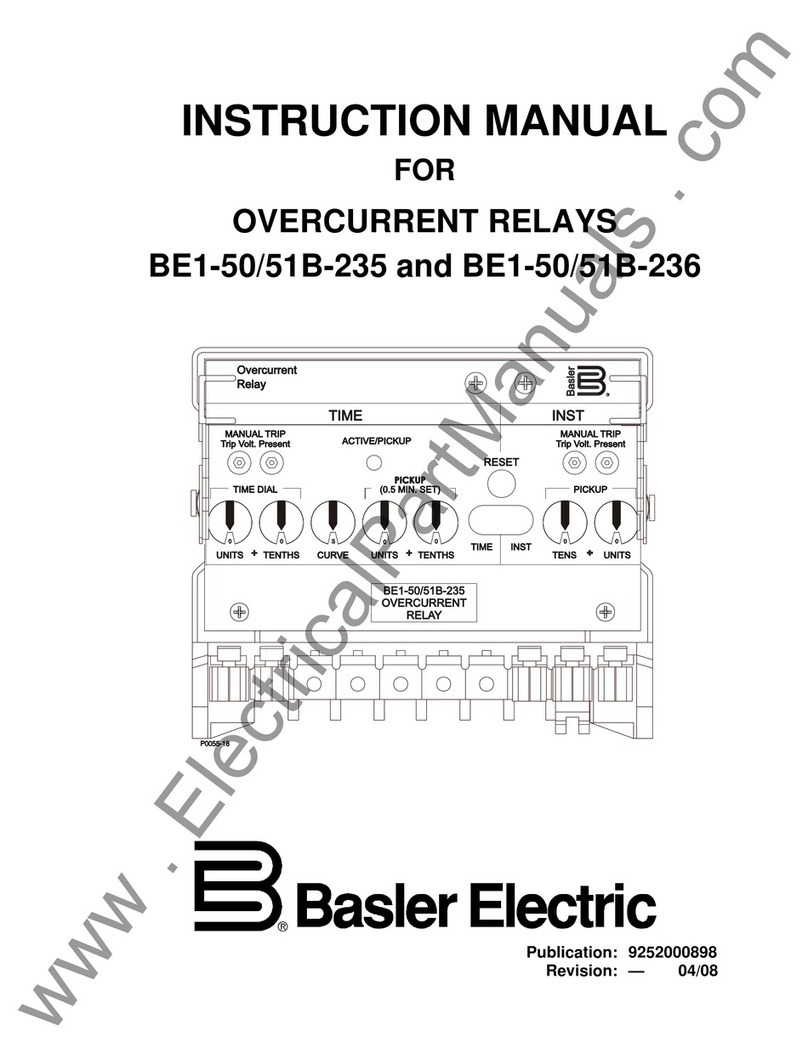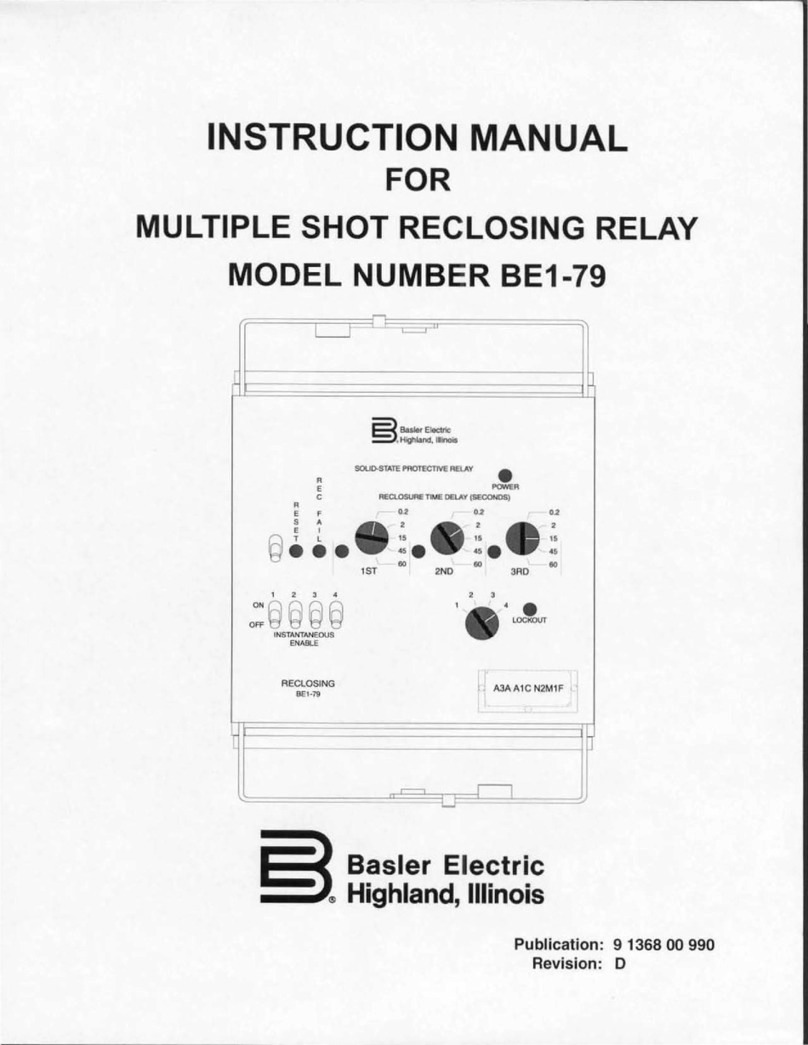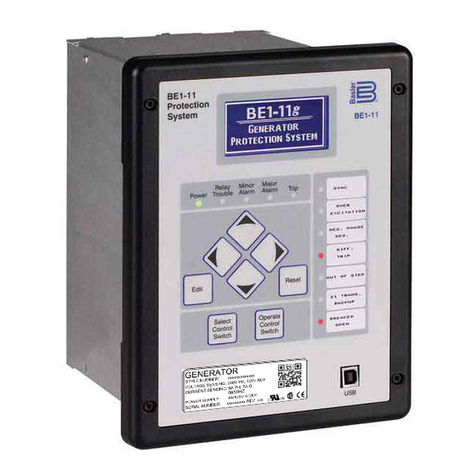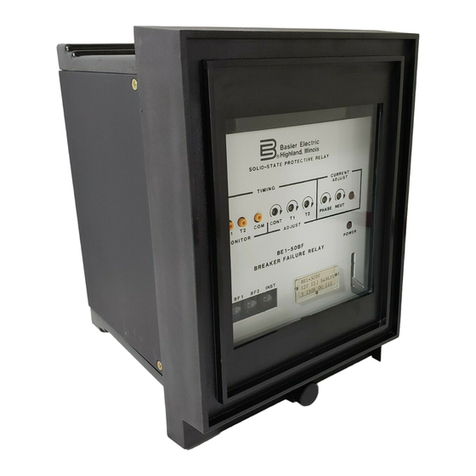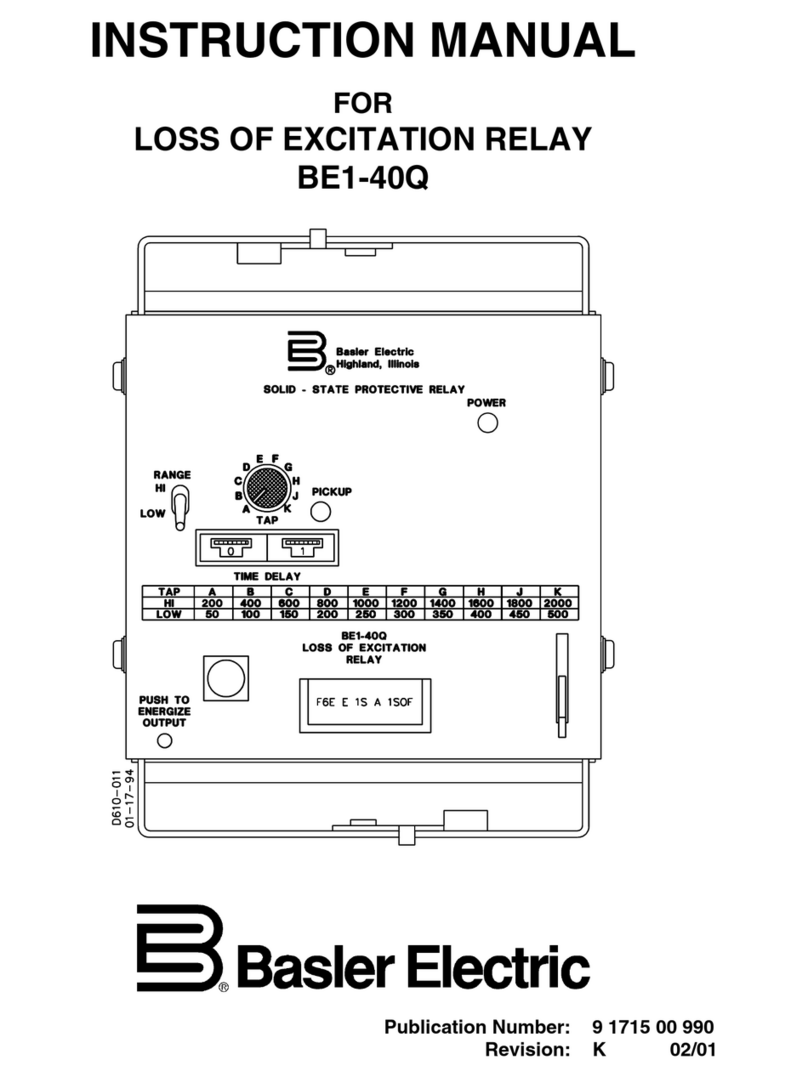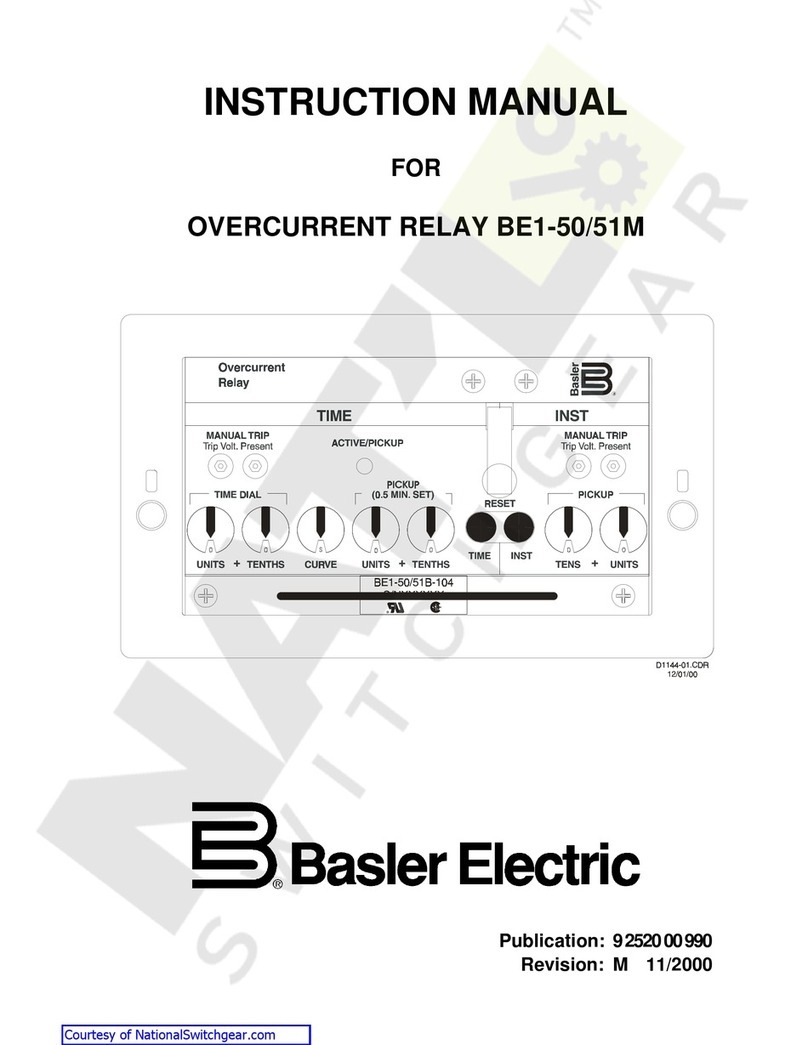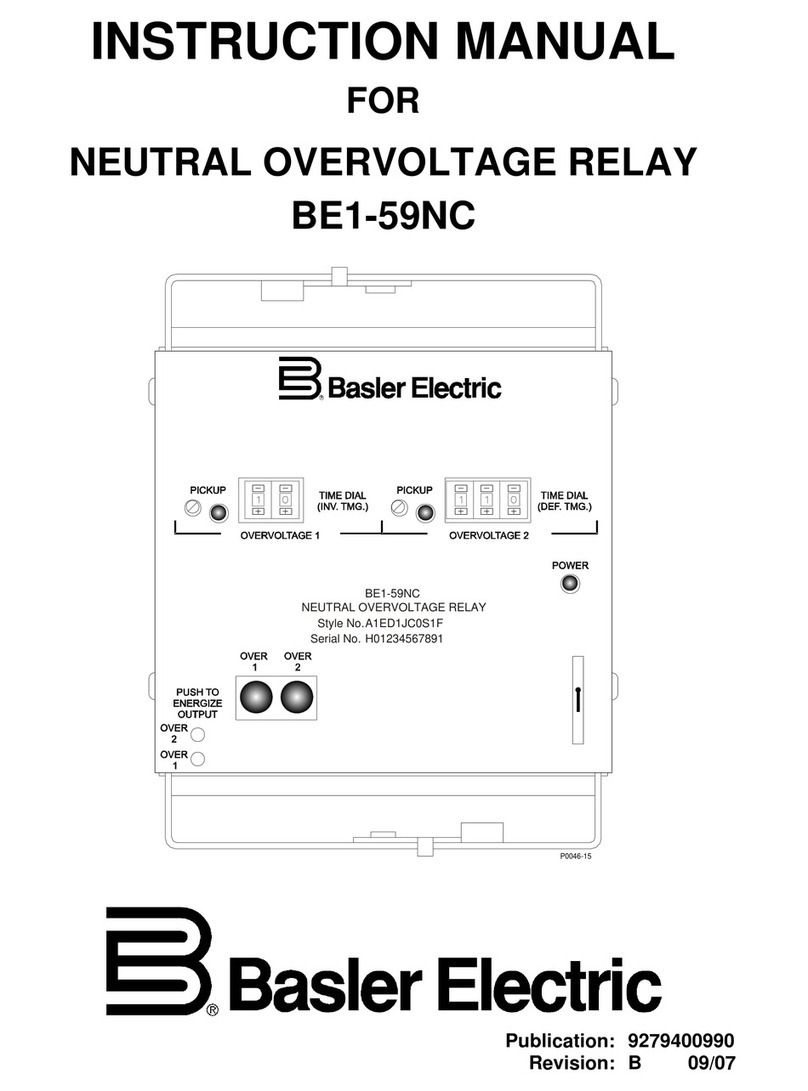
BE1-46N Introduction iii
CONTENTS
SECTION 1 GENERAL INFORMATION 1-1
Description ................................................1-1
Principles of Symmetrical Operation ............................1-1
Model and Style Number .....................................1-1
Style Number Example ...................................1-2
Style Number Identification Chart ...........................1-2
Specifications ..............................................1-3
SECTION 2 HUMAN-MACHINE INTERFACE 2-1
Controls and Indicators ......................................2-1
SECTION 3 FUNCTIONAL DESCRIPTION 3-1
General ...................................................3-1
Input Sensing ..............................................3-1
Measuring I2...............................................3-1
Microprocessor .............................................3-2
Program Monitor ............................................3-2
Outputs ...................................................3-2
Power Supply ..............................................3-2
Power Supply Status Output ..................................3-3
Setting Consideration ........................................3-3
I nReference Level (Tap Value) ............................3-4
Alarm and Pickup ........................................3-4
K Setting ..............................................3-4
MAX TIME .............................................3-4
Calculation Example ........................................3-5
Setting Tap Adjust ..........................................3-5
Method 1, Single-Phase ..................................3-5
Method 2, Three-Phase ...................................3-6
Further Considerations .......................................3-7
Characteristic Curves ........................................3-8
SECTION 4 INSTALLATION 4-1
General ...................................................4-1
Relay Operating Precautions ..................................4-1
Dielectric Test ..............................................4-1
Mounting ..................................................4-1
S1 Case, Outline Dimensions, Front View ....................4-2
S1 Case, Panel Drilling Diagram, Semi-Flush Mounting .........4-3
S1 Case, Outline Dimensions, Rear View .....................4-4
S1 Case, Semi-Flush Mounting, Side View ...................4-5
S1 Case, Panel Drilling Diagram, Projection Mounting ..........4-6
S1 Case, Projection Mounting, Side View .....................4-7
Remote Meter Dimensions and Drilling Diagram ...............4-8
Connections ...............................................4-8
Typical DC Control Connections ............................4-9
Typical AC Sensing Connections ..........................4-10
Typical Internal Connections ..............................4-11
www . ElectricalPartManuals . com

